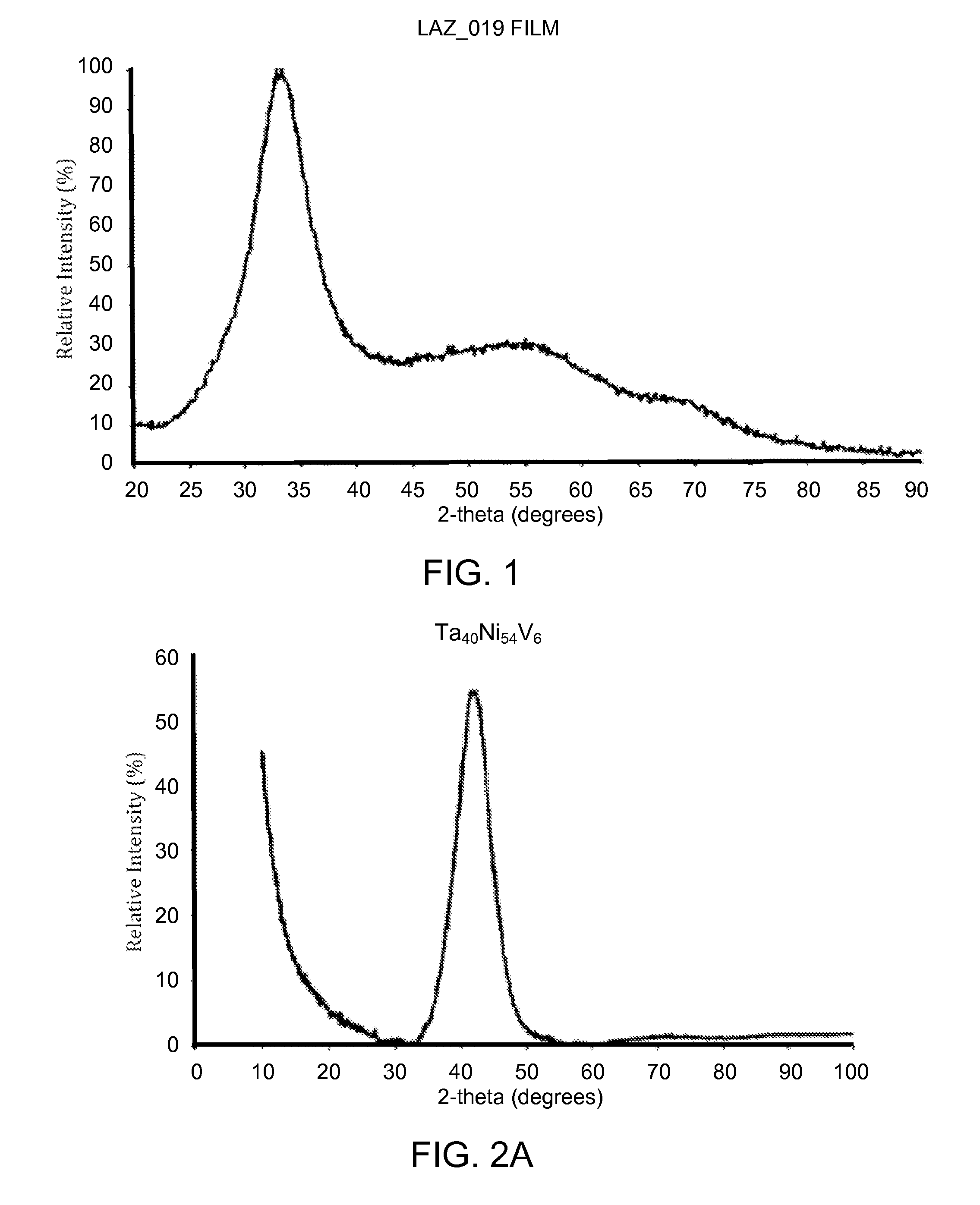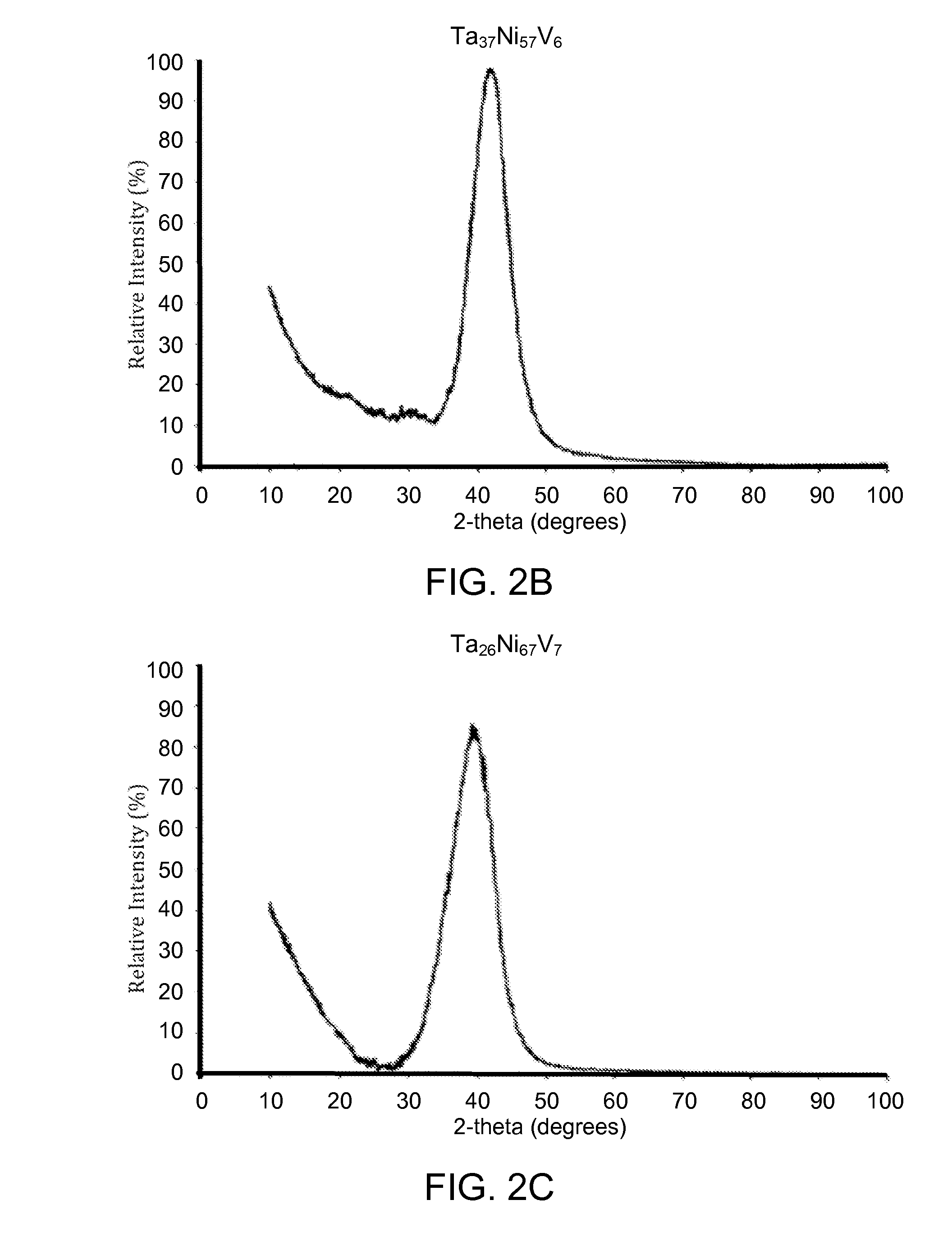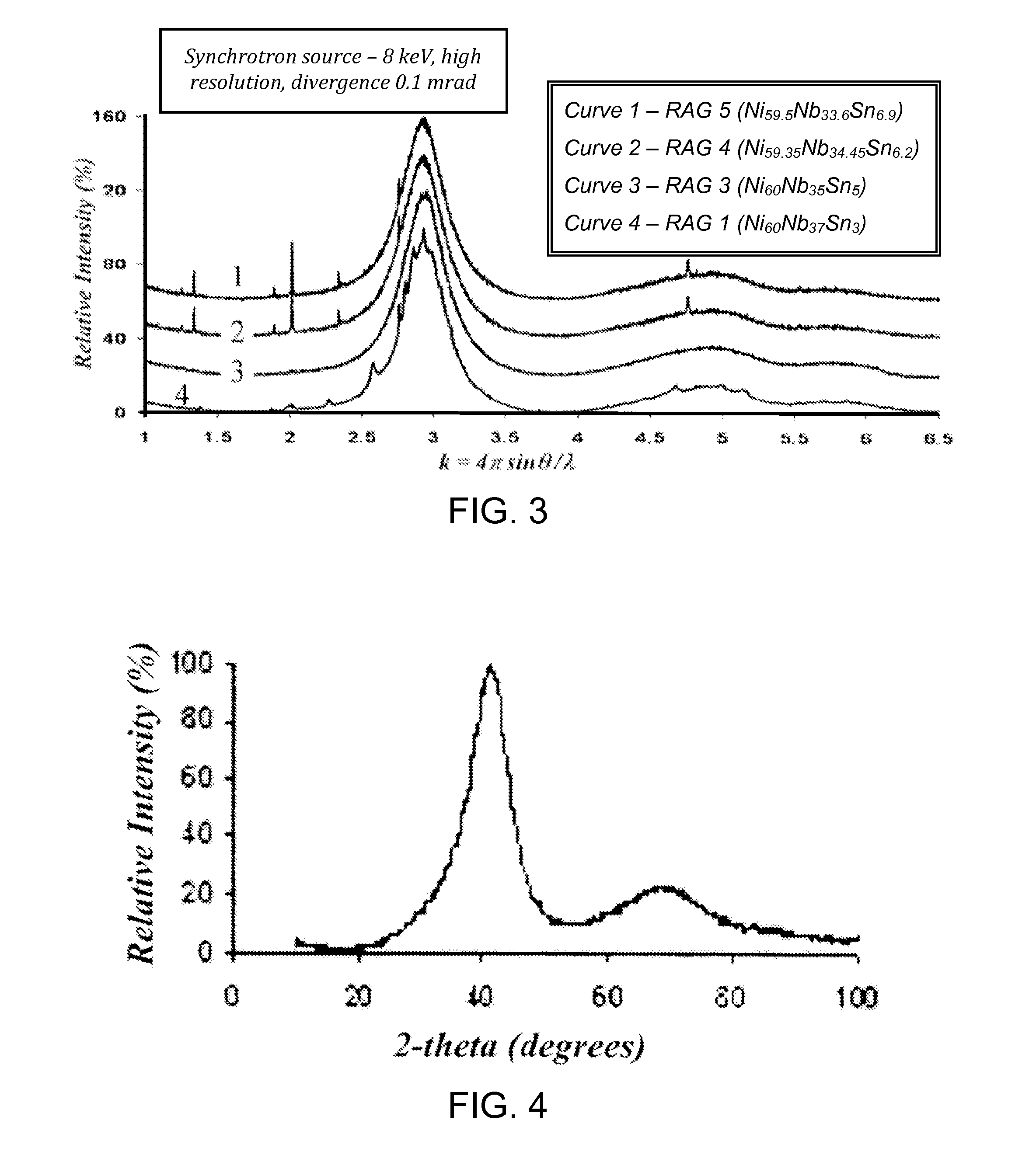Process for applying amorphous metal
a technology of amorphous metal and process, applied in the field of amorphous metallic alloys, can solve the problem of the same composition of the coating
- Summary
- Abstract
- Description
- Claims
- Application Information
AI Technical Summary
Benefits of technology
Problems solved by technology
Method used
Image
Examples
examples
[0036]The conventional method for assessing the amorphous nature of a solid material is to do a conventional laboratory x-ray diffraction pattern (XRD). The problem with this in working with metallic glass coating is two-fold. First the scattering intensity from thin film is generally very low because of the restricted scattering volume and hence it is difficult to get good counting statistics. It is also hard to separate out scattering from the underlying substrate. The usual divergence of the best Laboratory x-ray machines is about 5 mrad, while that for beamline 2-1 at Stanford Synchrotron Radiation Laboratory is 0.1 mrad (a 50:1 improvement). That means that conventional XRD would have great difficulty in telling the difference between a nanocrystalline material (which would still have and enormous number of defects, especially considering the grain boundary area) and a full amorphous material. A comparison between conventional XRD and a high-resolution synchrotron diffraction p...
PUM
| Property | Measurement | Unit |
|---|---|---|
| thickness | aaaaa | aaaaa |
| thickness | aaaaa | aaaaa |
| glass transition temperature | aaaaa | aaaaa |
Abstract
Description
Claims
Application Information
 Login to View More
Login to View More - R&D
- Intellectual Property
- Life Sciences
- Materials
- Tech Scout
- Unparalleled Data Quality
- Higher Quality Content
- 60% Fewer Hallucinations
Browse by: Latest US Patents, China's latest patents, Technical Efficacy Thesaurus, Application Domain, Technology Topic, Popular Technical Reports.
© 2025 PatSnap. All rights reserved.Legal|Privacy policy|Modern Slavery Act Transparency Statement|Sitemap|About US| Contact US: help@patsnap.com



